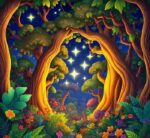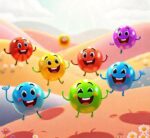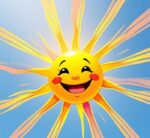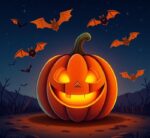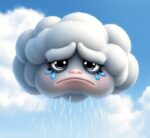- You are here:
- Home »
- words
- » Halloween Words That Start With W [LIST]
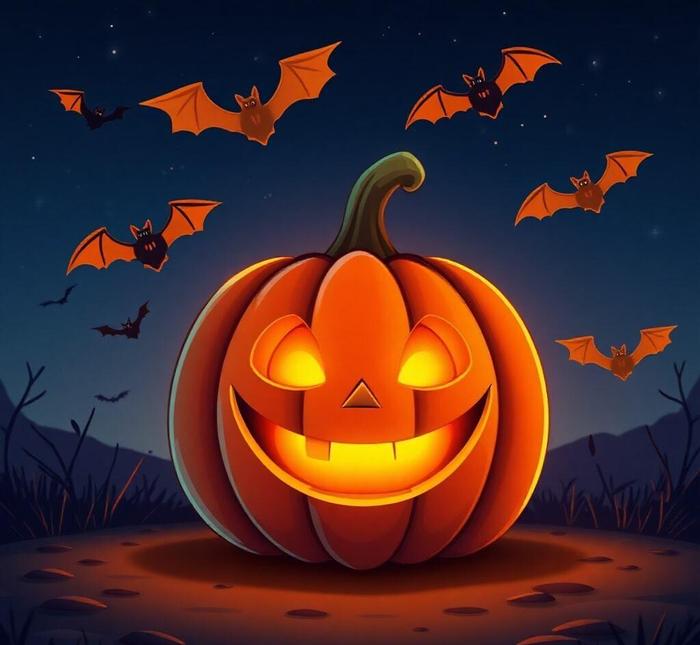
Halloween Words That Start With W [LIST]
Halloween is a time of year filled with spooky traditions, creepy costumes, and eerie decorations. For those looking to add a bit of creativity to their celebrations, incorporating Halloween-themed words can enhance the atmosphere. From the wailing winds to wicked witches, words starting with the letter ‘W’ evoke a sense of mystery and fear, perfect for any Halloween occasion. In this article, we’ll delve into a collection of Halloween words that begin with ‘W’, each contributing to the ultimate Halloween vibe.
These words not only set the tone for storytelling and decor but also help inspire new ways to celebrate the season. Whether you’re planning a haunted house, crafting eerie invitations, or just looking to enrich your Halloween vocabulary, this list of words will bring your spooky celebrations to life. Let’s explore these whimsical, wicked, and wraith-like words that are perfect for adding that extra Halloween flair to your festivities.
Halloween Words That Start With W
1. Witch
A witch is a mythical or magical figure commonly associated with Halloween. In folklore, witches are often depicted as women with supernatural powers who can cast spells, brew potions, and ride broomsticks. Halloween witches are usually portrayed as wearing pointed hats and cloaks, and they are central characters in many spooky stories.
Examples
- The witch waved her wand over the bubbling cauldron.
- She dressed as a wicked witch with a black hat and a long, flowing cloak.
2. Werewolf
A werewolf is a human who transforms into a wolf or wolf-like creature, typically under the light of a full moon. In Halloween lore, werewolves are a popular symbol of fear and the supernatural, known for their wild, uncontrollable nature and their haunting howls.
Examples
- He transformed into a fearsome werewolf under the full moon.
- The werewolf howled loudly as it prowled the dark forest.
3. Wicked
Wicked is a term used to describe something evil, cruel, or morally wrong. In the context of Halloween, it is often used to describe malevolent creatures, characters, or spirits, such as wicked witches, demons, or haunted beings.
Examples
- The wicked witch’s laughter echoed through the night.
- They told stories of the wicked vampire who roamed the countryside.
4. Wraith
A wraith is a ghostly apparition, often considered a harbinger of death. In folklore, wraiths are spirits of the dead who are unable to rest, and their appearance is usually a sign of impending doom or tragedy.
Examples
- A wraith hovered over the graveyard, its ghostly figure drifting in the fog.
- The wraith was said to be the spirit of a person who had died under mysterious circumstances.
5. Web
A web is a structure created by a spider, typically made of silk threads. Webs are often associated with Halloween due to their eerie, delicate appearance, and they are commonly used in decorations for haunted houses and spooky environments.
Examples
- The corners of the old house were covered in spider webs.
- He walked into the dark room, only to find it littered with webs.
6. Witchcraft
Witchcraft refers to the practice of magical arts, often involving the casting of spells, herbal remedies, and supernatural rituals. In Halloween traditions, witchcraft is tied to witches and other magical practitioners who are believed to possess powers that can be both helpful and harmful.
Examples
- She practiced witchcraft and made potions in her hidden cabin.
- The village feared her for her knowledge of ancient witchcraft.
7. Worm
A worm, particularly when used in Halloween settings, is often portrayed as a creepy crawly creature. Fake or gummy worms are frequently used as gross-out treats during Halloween parties, adding to the theme of things that squirm and disgust.
Examples
- The bowl of gummy worms was a hit at the Halloween party.
- Children were dared to touch the fake worms in the dark corner of the room.
8. Wolfman
The wolfman is a werewolf-like creature that has a half-human, half-wolf appearance. This Halloween figure is often associated with horror films and stories, where the character undergoes a transformation from man to beast under the full moon.
Examples
- The wolfman lumbered into the village, terrifying everyone in his path.
- In the movie, the wolfman’s transformation was both horrifying and tragic.
9. Whisper
A whisper is a soft, hushed voice often used in horror stories and Halloween settings to create a sense of mystery or foreboding. The sound of a whisper is often associated with ghosts, spirits, and hidden secrets, adding to the eerie atmosphere.
Examples
- The wind carried the faint whisper of the ghost through the graveyard.
- I heard a whisper behind me, but when I turned around, no one was there.
10. Witch’s Brew
Witch’s brew is a term used to describe a potion or concoction made by witches, often involving strange and magical ingredients. In Halloween lore, it is typically a bubbling cauldron full of mysterious substances that may grant magical powers or cause harm.
Examples
- The old witch stirred a cauldron filled with her mysterious witch’s brew.
- The ingredients for the witch’s brew were said to include eye of newt and bat wings.
11. Wand
A wand is a magical stick or rod used by witches, wizards, and other magical beings to cast spells or perform magic. In Halloween, wands are often associated with witches who use them to enchant or curse, or with wizards in spooky fairy tales.
Examples
- She waved her wand, and a cloud of sparkles filled the air.
- The witch’s wand glowed with an eerie green light as she cast her spell.
12. Wall
Walls, especially in haunted houses, are often part of spooky settings in Halloween stories. They can be described as shifting, whispering, or covered in creepy symbols, contributing to an unsettling atmosphere.
Examples
- The haunted house had walls that seemed to move and change.
- He pressed his ear to the cold, stone wall, listening for the sound of footsteps.
13. Whiskers
Whiskers are sensory hairs on animals, particularly on cats. In Halloween, the whiskers of black cats are often highlighted as part of their mysterious, supernatural qualities, symbolizing their connection to witchcraft and the occult.
Examples
- The black cat’s whiskers twitched as it stalked through the moonlight.
- The eerie cat’s whiskers brushed against my leg as it passed silently by.
14. Wickedness
Wickedness refers to extreme evil or moral corruption, often associated with Halloween figures like vampires, witches, and demons. It is used to describe malevolent forces or beings that thrive on causing fear and harm.
Examples
- The wickedness of the vampire lord was legendary.
- He could feel the wickedness of the haunted house seeping into his bones.
15. Wood
Wood, particularly when used in Halloween settings, refers to dark, dense forests or wooded areas that are often home to supernatural beings or spooky creatures. These areas are ideal settings for witches’ lairs, ghostly apparitions, and hidden dangers.
Examples
- The sound of footsteps echoed through the dense, dark wood.
- They ventured deeper into the forest, where the trees seemed to whisper in the wind.
16. Wailing
Wailing is a high-pitched, mournful sound often associated with spirits or ghosts. In Halloween lore, the wailing of supernatural beings, such as banshees or vengeful spirits, is said to foreshadow death or tragedy.
Examples
- The wailing of ghosts filled the night air.
- He heard the wailing of a banshee in the distance, signaling impending doom.
17. Wolf
Wolves are often associated with Halloween due to their predatory nature and the werewolf legends that involve humans transforming into wolves. The howl of a wolf adds an element of wilderness and danger to the Halloween setting.
Examples
- The lone wolf howled at the full moon in the distance.
- He could hear the distant howls of wolves in the forest, adding to the eerie atmosphere.
18. Witch’s Hat
A witch’s hat is a traditional pointy hat often worn by witches during Halloween. It is typically black, with a wide brim and may feature additional decorations such as buckles or ribbons. The witch’s hat is one of the most iconic symbols of Halloween.
Examples
- Her witch’s hat was adorned with a silver buckle and flowing ribbons.
- The children eagerly grabbed their witch’s hats from the costume shop for the party.
19. Wicked Witch of the West
The Wicked Witch of the West is a famous character from ‘The Wizard of Oz.’ Known for her green skin, evil nature, and thirst for power, she is one of the most iconic witches in literature and film, especially around Halloween.
Examples
- The Wicked Witch of the West was feared by all who lived in the land of Oz.
- She rode her broom across the sky, cackling loudly as the storm clouds gathered.
20. Wretched
Wretched is a term used to describe something pitiful, miserable, or in poor condition. In Halloween settings, wretched creatures often refer to grotesque monsters, ghosts, or beings that evoke fear and sympathy.
Examples
- The wretched creature dragged itself across the ground.
- They found a wretched, abandoned house at the edge of the village, rumored to be haunted.
21. Wrist
A wrist is a part of the body, but in Halloween settings, it is often associated with eerie sensations or unusual accessories like creepy bracelets, wristbands, or even the touch of a ghostly figure.
Examples
- Her wrist was adorned with a silver bracelet shaped like a skull.
- He felt the cold wrist of the ghostly figure brush against him as it passed.
22. Wickedly
Wickedly is an adverb that describes actions done with evil intent or in a cruel, malicious manner. It’s commonly used in Halloween stories to characterize the behavior of villains or supernatural beings.
Examples
- The witch smiled wickedly as she watched her spell unfold.
- The haunted house creaked wickedly, as though it were alive.
23. Wander
Wander refers to moving about aimlessly or without a clear destination. In Halloween settings, wandering is often associated with lost souls, ghosts, or creatures that roam in search of something or someone, adding to the mystery.
Examples
- They wandered through the graveyard, unsure of what they might find.
- The lost souls wander the abandoned town, unable to find peace.
24. Witching Hour
The witching hour is traditionally the time between midnight and 1 a.m., when supernatural activity is believed to be at its peak. This time is associated with witchcraft, ghosts, and eerie events, often marking the height of Halloween night.
Examples
- The witching hour struck at midnight, and the spells began to work.
- Strange things happen at the witching hour when the veil between the living and the dead is thinnest.
25. Whip
A whip, often used as a tool or weapon, can add a sense of tension or danger to Halloween stories. It is sometimes seen in the hands of villains, monsters, or dark characters who use it for control or intimidation.
Examples
- The vampire’s whip cracked through the air, sending a shockwave of terror.
- She wielded her whip like a weapon, ensuring no one could escape her wrath.
26. Witch’s Familiar
A witch’s familiar is an animal companion believed to assist witches in their magical practices. Common familiars include cats, owls, toads, and bats. These creatures are thought to possess supernatural powers and act as agents of their witch’s will.
Examples
- The black cat was her witch’s familiar, always by her side.
- Some believed the owl to be a witch’s familiar, serving as a messenger between worlds.
27. Weird
Weird refers to things that are strange, supernatural, or out of the ordinary. In Halloween contexts, the term is often used to describe occurrences, creatures, or environments that defy explanation and invoke fear or intrigue.
Examples
- They found a weird, glowing stone in the center of the abandoned house.
- The weird noises outside were enough to send everyone running.
28. Wicked Witch
The wicked witch is a classic villain in many Halloween stories, embodying evil and dark magic. Often portrayed as vengeful and manipulative, she is one of the most iconic figures in Halloween folklore.
Examples
- The wicked witch cursed them, sealing their fate forever.
- Everyone feared the wicked witch who lived deep in the forest.
29. Wicked Spirit
A wicked spirit refers to a malevolent ghost or entity that causes harm or instills fear. These spirits are often trapped in places or attached to people, and their presence in Halloween tales is synonymous with dark magic and terror.
Examples
- The wicked spirit haunted the house for years, terrorizing anyone who entered.
- A wicked spirit roamed the halls, its malevolent energy palpable in the air.
30. Wandering Ghost
A wandering ghost is a restless spirit that is unable to find peace or rest, often linked to unfinished business or a tragic end. In Halloween lore, these ghosts wander the earth, haunting specific places or people.
Examples
- The wandering ghost was said to appear to those who dared to enter the old mansion.
- The wandering ghost could not find peace, condemned to roam for eternity.
31. Witch’s Curse
A witch’s curse is a powerful spell or enchantment placed on someone or something. The curse often brings bad luck, misfortune, or even death, and is a common theme in Halloween stories where witches take revenge or wield their dark powers.
Examples
- The village lived in fear of the witch’s curse that plagued them every Halloween.
- A witch’s curse can bring misfortune to anyone who crosses her path.
32. Wicked Trick
A wicked trick is a mischievous or malicious prank, often associated with Halloween. These tricks are meant to frighten, deceive, or surprise, contributing to the playful yet spooky atmosphere of the holiday.
Examples
- The wicked trick played on the children left them frightened and confused.
- He pulled off a wicked trick during the party, scaring everyone with his costume.
33. Wand of Power
A wand of power is a magical item believed to have immense, often dangerous, magical abilities. In Halloween stories, these wands are wielded by witches or dark sorcerers to cast spells or perform extraordinary feats of magic.
Examples
- The wand of power was said to hold immense magical abilities.
- She used the wand of power to cast the spell that would seal the fate of the village.
34. Wail
A wail is a long, mournful cry that is often associated with supernatural beings such as banshees or ghosts. In Halloween folklore, a wail is an eerie sound that signals death or impending doom.
Examples
- The wail of a banshee echoed across the hills.
- She let out a chilling wail as the spirit overtook her.
Historical Context

Halloween, a holiday steeped in ancient traditions, has evolved over centuries, absorbing elements from various cultures. Many of the words associated with Halloween carry the echoes of history, and some of these words that begin with the letter "W" reveal intriguing insights into the holiday’s deep-rooted customs. To understand these words, we must first take a look at the historical context from which they emerge.
The origins of Halloween can be traced back to the ancient Celtic festival of Samhain, a celebration that marked the end of the harvest season and the beginning of winter. It was believed that on the night of Samhain, the veil between the living and the dead was thinnest, allowing spirits to wander the earth. As Christianity spread through Europe, Samhain was gradually integrated with Christian traditions, particularly the observance of All Hallows’ Eve, the night before All Saints’ Day. This fusion of pagan and Christian practices gave rise to the modern Halloween we recognize today.
Several Halloween-related words that start with "W" reflect this historical amalgamation of beliefs. Words like “witch” and “wand” have long-standing associations with both folk magic and Christian demonology, often symbolizing the power to control or communicate with spirits. The term “wraith,” for instance, relates to a ghostly figure that emerged from early European folklore, where it was believed to be a spectral manifestation of the dead, wandering the earth.
The evolution of Halloween celebrations also mirrors changes in societal views about death, spirits, and the supernatural. What once began as a solemn occasion to honor the dead transformed over time into a more playful and mischievous holiday with costumes, tricks, and treats. Yet, the historical underpinnings of Halloween remain alive in the words we use to describe its traditions, especially those beginning with “W.”
Word Origins And Etymology
Understanding the origins of Halloween words starting with "W" provides a fascinating glimpse into the linguistic evolution that mirrors changes in folklore, superstition, and culture. Many of these words have their roots in Old English, Middle English, or older languages, reflecting centuries of cultural exchange and transformation.
Take the word “witch,” for example. Its origin can be traced back to the Old English word wicca for a male practitioner of witchcraft or magic. This term itself is believed to have come from the Proto-Germanic wikkjaz, meaning “to bend” or “to turn,” symbolizing the bending of natural laws. The term was gendered, with wicca referring to a male witch and wicce to a female witch. Over time, “witch” evolved to encompass all practitioners of magic, particularly in the context of folklore where witches were often associated with malevolent supernatural powers. The witch figure in Halloween lore draws on centuries of persecution, superstition, and the fear of dark magic, although the modern image is often more benign or playful.
Similarly, “wraith,” a word often used to describe a ghostly apparition, originates from the Old Scots word wraith, which means "a ghost or spirit of a dead person." The word itself comes from a Proto-Indo-European root, wer-, which means “to turn, twist, or change,” implying the transformation of a soul from the physical world to the spirit world. In early folklore, a wraith was believed to be a harbinger of death, a spirit appearing to foretell the passing of a loved one. Over time, the concept of the wraith became more nebulous, often representing a restless spirit or shadowy figure.
The word “wand,” often associated with witches and wizards, comes from the Old English word wand, meaning a slender, flexible twig or rod, often used as a tool for magical purposes. It traces back to Proto-Germanic wando, which refers to a stick or a twig. In early European folklore, wands were not just tools of sorcery but were believed to have the ability to ward off evil spirits or summon supernatural forces. Today, wands are synonymous with magic and the whimsical, particularly in Halloween costumes and decorations, symbolizing both mystery and power.
Common Misconceptions
Halloween is a holiday rich in symbolism, and while some words associated with it are widely recognized, others are subject to frequent misconceptions. These misunderstandings are often fueled by pop culture representations, folk beliefs, and misinterpretations of historical facts. Many words that begin with "W" in the context of Halloween carry their own set of myths and misconceptions.
One common misconception centers around the word “witch.” In modern times, witches are often portrayed as female spellcasters with pointy hats, broomsticks, and black cats, thanks in large part to the influence of children’s literature and movies like The Wizard of Oz and Hocus Pocus. However, the real history of witchcraft, particularly during the Middle Ages and early modern period, is far darker and more tragic. Many people, particularly women, were accused of witchcraft during the European witch hunts, often leading to executions. The misconception of witches as simply humorous or harmless characters ignores the historical persecution and complex beliefs surrounding them. Witches were once feared and stigmatized as agents of evil, a far cry from the modern, benign Halloween figure.
Another misconception involves the word “wraith.” Popular culture often treats wraiths as generic ghosts or spirits, but their historical meaning was much more specific. In traditional Scottish folklore, a wraith was thought to be an omen, a spectral apparition that appeared before a person’s death, often representing a person’s soul in torment. This belief was tied to ideas of death and fate, but modern interpretations tend to oversimplify the wraith as just another type of ghost. In fact, many believed a wraith was a form of premonition, often indicating that death was imminent for someone close by.
The word “wand” also comes with its fair share of misconceptions. While wands are popularly depicted in wizardry and fantasy literature as tools of great power, their historical role was often more mundane. In early folklore, wands were simply sticks or branches used in rituals and for healing, and not every wand had mystical properties. The magical qualities attributed to wands in modern Halloween lore are largely a product of modern fiction, where they have come to symbolize concentrated magical power, especially in the context of witches and wizards.
Conclusion
The Halloween words that start with "W"—such as witch, wraith, and wand—are steeped in rich historical and linguistic traditions that reflect centuries of cultural evolution. From their ancient origins in Celtic, Germanic, and Old English languages to their modern-day associations with magic, death, and the supernatural, these words have developed layers of meaning that add depth to our understanding of the holiday.
While many of these words have become linked with the playful aspects of modern Halloween celebrations, it is essential to recognize their historical roots, which often tie them to darker, more somber beliefs. The misconceptions surrounding some of these words, like witches and wraiths, remind us of how Halloween has evolved, from a time of fear and reverence for the supernatural to a holiday filled with costumes and candy. Yet, at its core, Halloween retains its connection to the unseen world, to death, to spirits, and to the mysteries that lie beyond the veil of the living.

